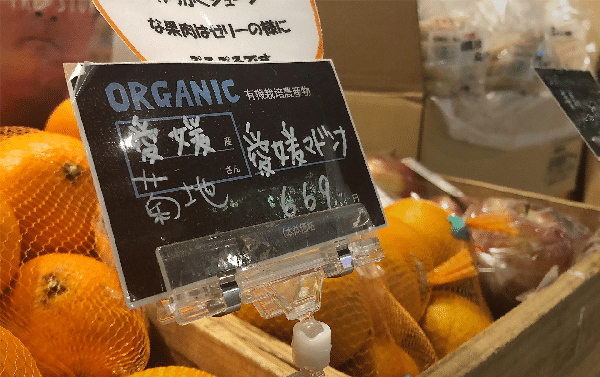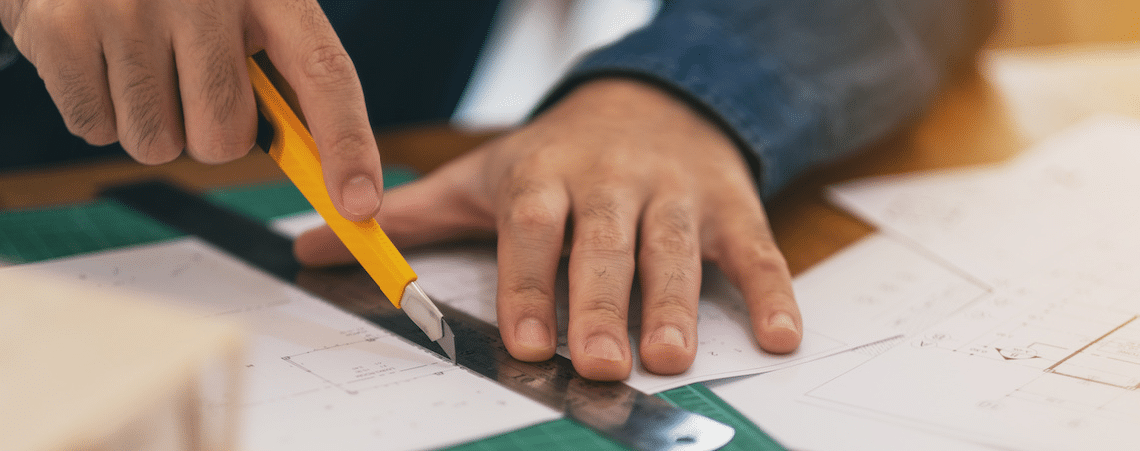For retailers or company directors, laminating is a daily task. As soon as the price of the product changes or the corners of the laminated price sheet start to peel off… it’s a task that has to be repeated again and again. We all get tired of the inefficiency and monotony of laminating.
Today, we’re going to look at the disadvantages of traditional lamination and give you some advice on how to optimise this process.
Why is lamination so ineffective?
Cutting to size: wasting precious time
Cutting the labels is the most time-consuming part of the lamination process. Most companies follow these steps:
- Heat up the laminator
- Laminate the labels one by one
- Cut to size
Carrying out these tasks once a year might be feasible, but when you run a shop with a lot of customers and this work becomes weekly (or even daily), we’re wasting a lot of time (and labour costs!).
Based on our experience and feedback from retailers, cutting takes about three times longer than the lamination process itself.
Reducing this working time will help you to be more efficient.
Repeated lamination
In supermarkets and garden centres, because of the higher humidity, laminated cards can start to peel off quite quickly. One of the worst examples is plastic price labels on frozen food shelves. Water droplets forming on the edges reduce the adhesion of the plastic film, causing the plastic to peel off.
But in reality, the edges of plastic-coated substrates also come off for completely different reasons: constant handling of media by staff, and even sunlight and heat can damage labels.
The employees who spend their time on this endless task of laminating deserve a better solution, one that will allow them to spend more time looking after customers and the shop in general.
For retailers who often need to renew the lamination, we recommend considering a process that does not require lamination at all.
Price labels in poor condition and the perception of your brand image

Do customers have a negative opinion of your brand when they see price labels with plastic peeling off?
As a quality company, you naturally do your best to check the condition of the labels. However, other urgent tasks such as stock control, accounting, customer management, etc. can take up a lot of your time. This means that you work hard to maintain this level of quality, but don’t have the time to look after the most visible feature of your shop: your price tags. During a single visit to the shop, each customer makes purchasing decisions based on the information on these labels. In other words, each customer sees hundreds of labels on each visit. If the cards come unstuck and give an unprofessional image, all the hard work you and your staff put into trying to create the ideal product and customer service environment is wasted.
Laminated price tags are not washable: another major disadvantage of lamination
When you sell fresh food such as fruit, vegetables, meat, etc., it’s common practice to place the price tag right next to the product. Dirt between the peeling layers, discolouration of the film, even small black dots (mould!) will immediately indicate a lack of hygiene. Believe it or not, some customers say that a dirty price tag next to fresh or raw food is a major red flag for them. At a time when modern consumers are increasingly concerned about hygiene and cleanliness, this is a crucial point.
It would be different if we could wash the price tags. However, when the cards are laminated, it’s impossible to wash them without aggravating the detachment, wetting the laminated paper (and causing the ink to run), etc. The only solution is to laminate them again. The only solution is to laminate them again.
Improve the process of creating your price labels

Our first tip: print on plastic (not paper!)
Finding a better way to laminate price labels printed on paper is a headache for all retailers. However, isn’t it the equivalent of taking painkillers when you have a headache (rather than tackling the cause of the headache itself)? We use lamination because we want our paper price labels to last longer and look more professional. The problem isn’t the lamination, it’s the paper!
If you want to reduce the “time” taken to laminate and improve the “quality” of your price labels, we recommend that you buy a solution for printing on plastic cards.
The most powerful plastic card printers can print high-quality PVC cards in less than 10 seconds, without having to laminate or cut them afterwards. PVC price labels are resistant to low temperatures, humidity and water. They’re also highly durable. No residue remains after cleaning, so they can be reused. The cards are also hygienic, making them ideal for use in food shops.
Manage your price tags intelligently!
Laminating is necessary to improve the attractiveness of a paper price label, but the time spent on this task could be used more effectively for other purposes and you could improve the productivity of your shop or business. If laminating is a problem for you, change your method and choose a new, more efficient and cost-effective work process!
